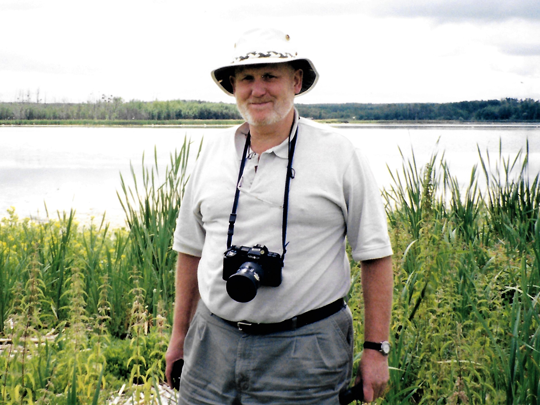Biosphere Profiles: Dr. Guy Swinnerton

Behind every successful organization stands an army of dedicated individuals, and the Beaver Hills Biosphere is no exception. Today, we are pleased to feature Dr. Guy Swinnerton, a driving force whose vision, extensive academic background and international experience and perspective helped lay the foundation for the Beaver Hills Biosphere as we know it today.
Dr. Guy S. Swinnerton was born in Wales. He spent his early years on his family’s farm located in the Usk Valley of Monmouthshire.
“Being raised on a farm meant that I was always keenly aware of the importance of agriculture to the rural economy as well as the impact of human activity on the landscape,” explains Guy.
His rural roots fostered in him a deep interest and involvement in parks, protected areas and conservation, which is mirrored in both his educational and professional experience. Guy earned a BA in Geography from University of London, a Masters in Geography at the University of British Columbia and finally, a PhD from the University of London in Land Use Studies in 1974.
Guy went on to gain years of experience as Principal Lecturer in Land Use Studies, and served as Director of the Natural Resources and Rural Economy Program at Seale-Hayne College in Devon, England before moving to Alberta to join the then Department of Recreation Administration at the University of Alberta in Edmonton. While at the University of Alberta, he also served as Chair of the former Department of Recreation and Leisure Studies and is currently Professor Emeritus in the Faculty of Kinesiology, Sport and Recreation. His education and career have covered the complete spectrum from wilderness areas and national parks to urban parks and natural areas.
“The multi-faceted aspects of my life and career, such as being brought up on a farm and familiarity with national parks and countryside management in both the UK and Canada, has provided me with the knowledge, insights and philosophy that were crucial to developing and applying the perspective on which the Beaver Hills Initiative and the Beaver Hills Biosphere is based,” explains Guy.
Central to this perspective is the belief that biodiversity conservation and safeguarding the cultural heritage of a landscape requires a bioregional and total landscape approach that involves both protected areas and the lived-in and working landscape.
The Biosphere connection
Guy’s involvement with what is now the Beaver Hills Biosphere began in 2002 with the establishment of the Beaver Hills Initiative (BHI), a regional, multi-stakeholder collaborative effort to address development and land use planning issues within the Beaver Hills moraine, with a focus on balancing sustainable economic and human development with environmental conservation.
During his time with the initiative, Guy served on the BHI Board, the BHI Executive Committee, and chaired several working groups including the Planners Working Group and the Protected Areas Working Group. Guy was also a critical player in the process to prepare and submit the Biosphere Reserve nomination to UNESCO. For Guy, being involved in the Biosphere has been not only a rewarding experience but also a privilege.
“The highlight of my involvement was receiving news of the acceptance of the Beaver Hills nomination by UNESCO and the subsequent designation of the Beaver Hills as a Biosphere Reserve on March 19, 2016,” shares Guy.
The UNESCO designation signifies not only the importance of the Beaver Hills as a distinctive geographical region but is also direct recognition for the dedication and hard work of those responsible for submitting the nomination.
“Being part of the global network of Biosphere Reserves is a significant accolade but it also encompasses an obligation to furthering conservation stewardship and practical sustainability at the local level that will benefit humanity as a whole,” Guy maintains.
From Guy’s perspective, the natural and cultural heritage, amenities within and biodiversity value of the Beaver Hills landscape are what drive the Beaver Hills Biosphere to seek out and demonstrate potential solutions to major global issues including declining biodiversity, the effects of climate change and urbanization.
A collective effort
Considered a strong, individual force behind the BHB, Guy is quick to point out the importance of the collaborative nature of the initiative, as well as the efforts of all the contributors and partners involved, including the many individuals from three levels of government, NGOs, academia, research institutions, industry and Indigenous communities.
“The strength of the Beaver Hills Biosphere lies within the collaborations among partners,” explains Guy. “It was particularly rewarding to experience the growth of that collaboration and the partnerships that fostered mutual learning and friendships, and I will carry this with me always.”
Although he has now stepped away from regular involvement in the programs and initiatives taking place within the region, Guy left his mark on and remains a true champion of the Biosphere and all that it stands for.